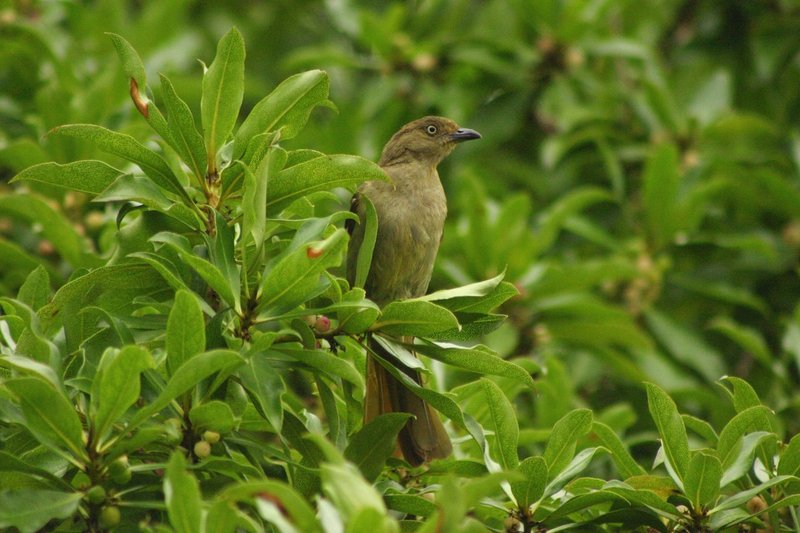|
| 질의: Small white | 결과: 930번째/2237 | |
Sombre Greenbul (Andropadus importunus) - Wiki
| 제목: | Sombre Greenbul (Andropadus importunus) - Wiki
| |

| 해상도: 1200x800
파일크기: 190229 Bytes
촬영일: 2006:02:25 05:13:26
사진기: Canon EOS DIGITAL REBEL (Canon)
F number: f/5.6
Exposure: 1/2000 sec
Focal Length: 300/1
등록시간: 2007:10:26 16:51:58
|
Sombre Greenbul
From Wikipedia, the free encyclopedia
[Photo] Sombre Greenbul, Andropadus importunus, Port Elizabeth, South Africa. Source: Flickr (http://flickr.com/photos/scarymonkeyshow/114403473/). Date 25 February 2006. Author Flickr user scarymonkeyshow (http://flickr.com/photos/scarymonkeyshow/)
The Sombre Greenbul, Andropadus importunus, is a member of the bulbul family of passerine birds. It is a resident breeder in coastal bush, evergreen forest and dry shrub land in eastern Africa from Ethiopia to the Cape in South Africa.
Identification
The Sombre Greenbul is 15???18 cm long, with mainly dull greyish olive-green plumage, paler on the underparts than above. It has a white iris. The sexes are similar in plumage, but juveniles are even duller than the adult and have dark eyes.
The subspecies A. i. hypoxanthus is much yellower below than the nominate subspecies.
Behaviour
The Sombre Greenbul is a common bird, which tends to stay hidden in foliage and is more often heard than seen. It is usually found in pairs or small groups foraging for insects, fruit and small snails.
The Sombre Greenbul is a vocal species, and the most typical call is a monotonous, ringing phrase starting with a penetrating single whistle weeeewee, followed by a jumbled chortle and ending off with a rather plaintive, drawn out whistle willy.
http://en.wikipedia.org/wiki/Sombre_Greenbul
| The text in this page is based on the copyrighted Wikipedia article shown in above URL. It is used under the GNU Free Documentation License. You may redistribute it, verbatim or modified, providing that you comply with the terms of the GFDL. |
|
^o^
동물그림창고 똑똑전화 누리집
^o^
|
|

